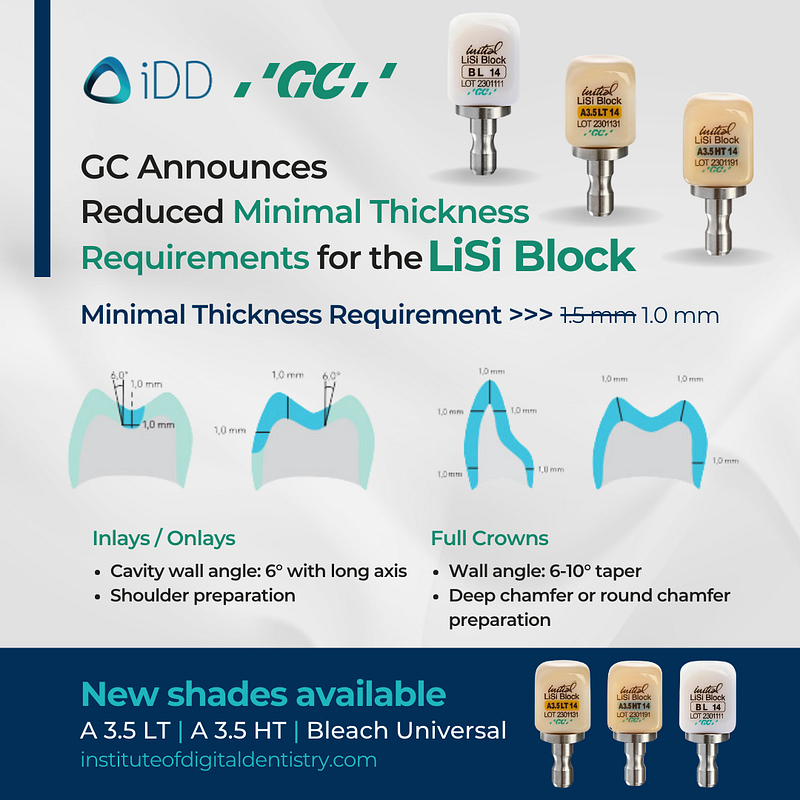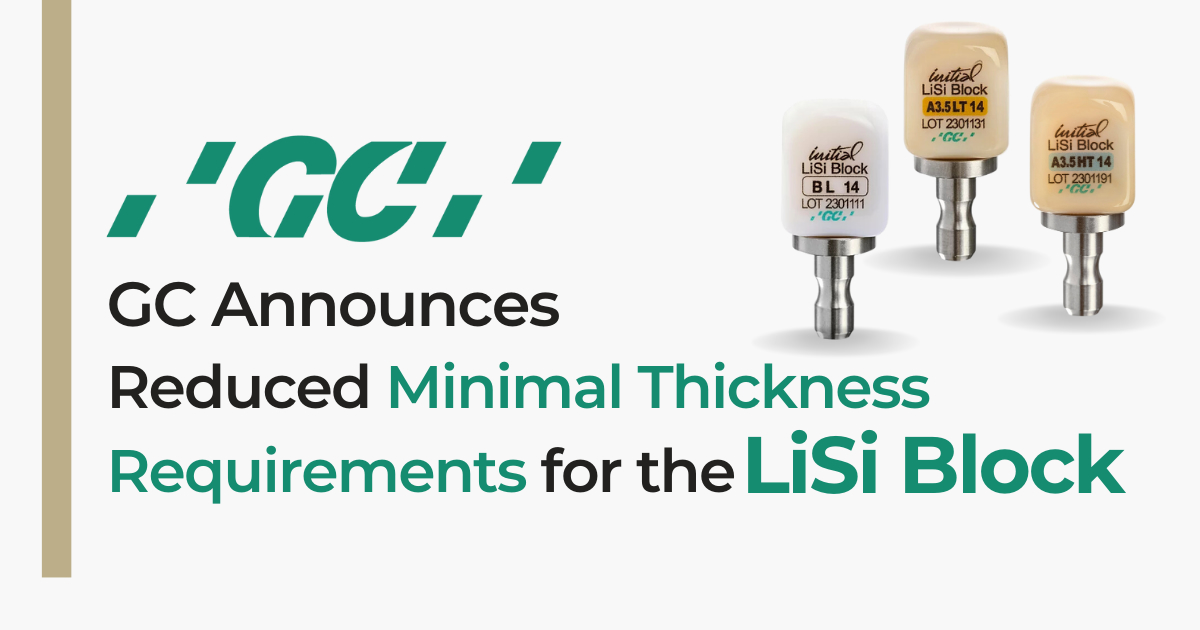For anyone who uses the GC Initial LiSi Block with their CEREC we’ve got some big news!
GC have announced a reduction in the minimal thickness requirements for the LiSi Block!
The previous parameter was 1.5mm, and set in place when you choose the material on your CEREC. This meant cutting more of the tooth back compared to if you were going to use e.max or Tessera, for example.
Although this could be manually changed, it is not recommended generally to play around with minimum thickness as verified by a company, as this risks fractured if violated.
Now the new minimum thickness requirement for GC Initial LiSi is 1.0mm.
So now, the LiSi block is similar to e.max in terms of how much tooth to prepare.
Why is this big news? Well, the GC Initial LiSi block is only e.max competitor block that is polish-and-place. Straight from the mill into the mouth. This cuts down a lot of time with glazing and crystallization in a furnace.
Other companies tried to pull this off (notable Dentsply with Celtra Duo) but this turned out to be a disaster, with a high fracture rate. Can GC pull off the polish and place workflow at 1.00 mm minimum thickness? Time will tell but its looking positive.

The company has also released new shade offerings: A3.5 LT / HT and Bleach Universal.
All you have to do is update your CEREC system and you'll be good to go.
Have you used GC LiSi before? Would love to know what you think of it!

